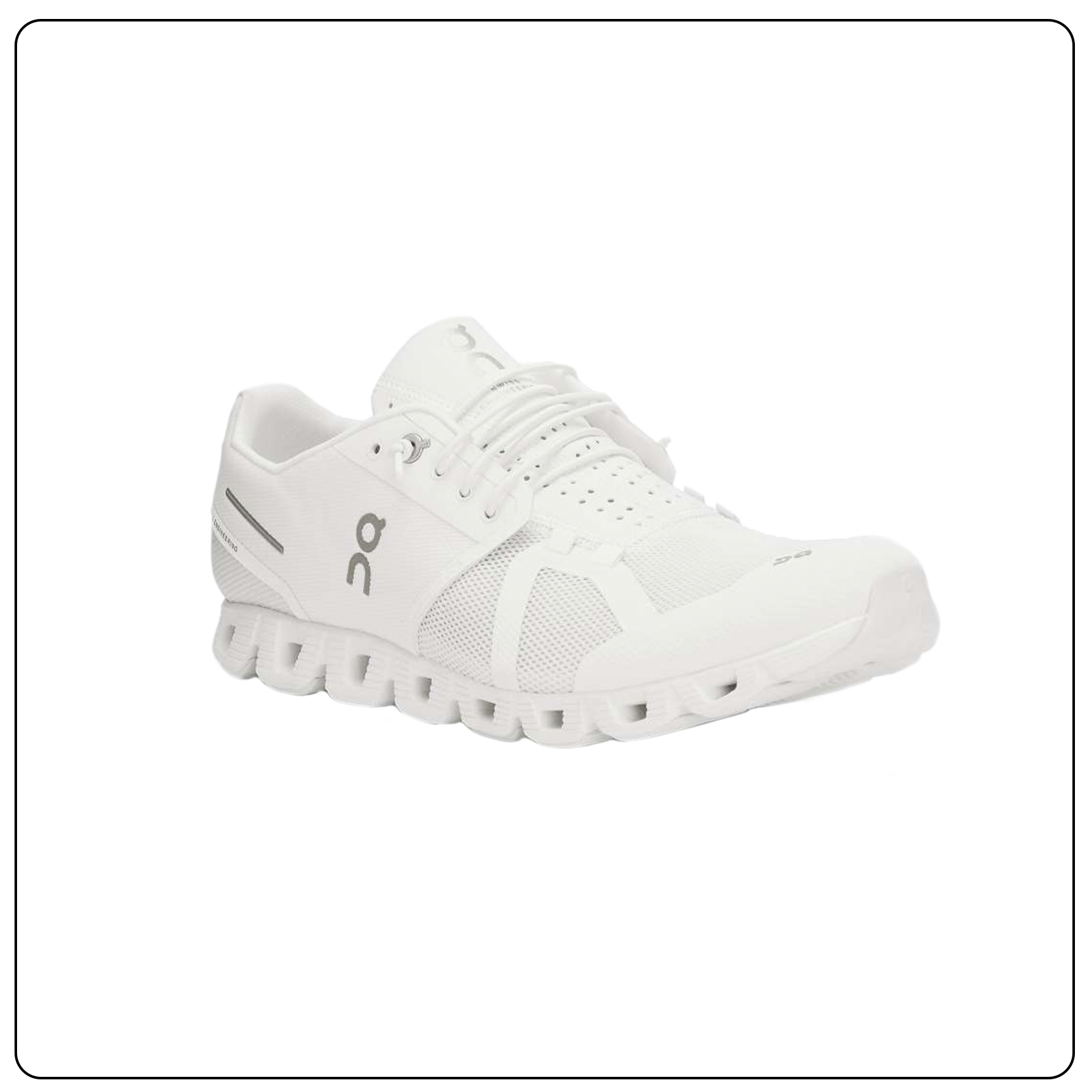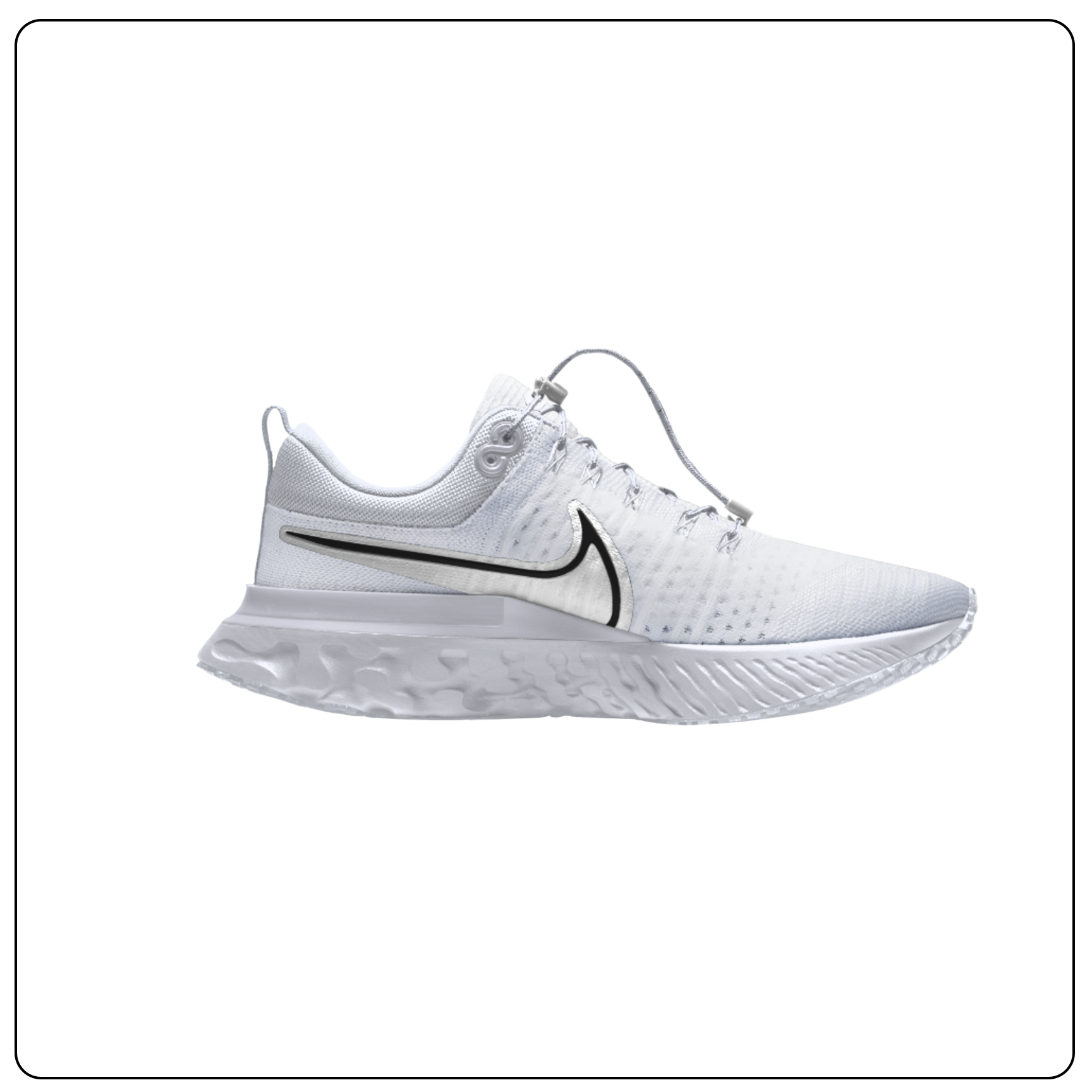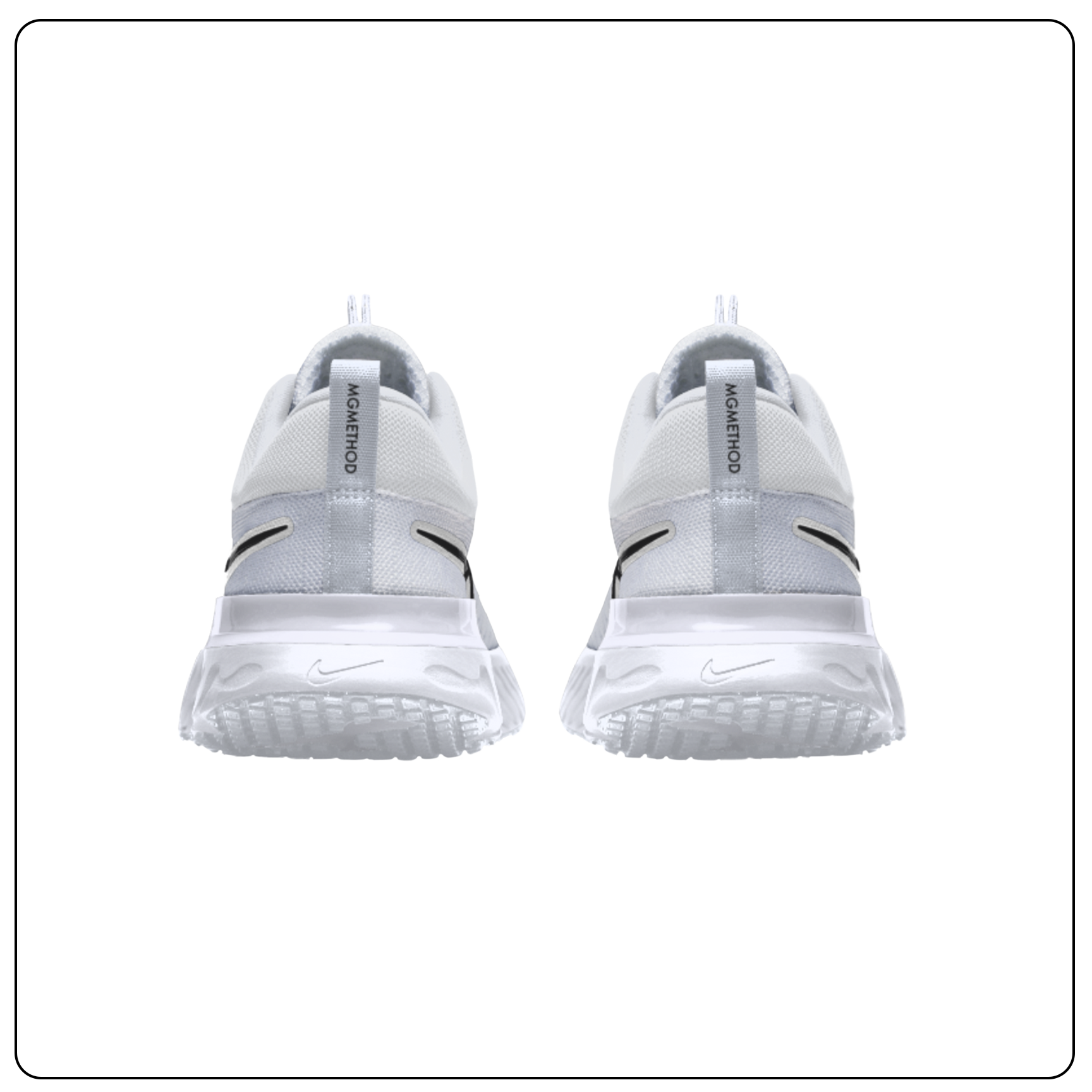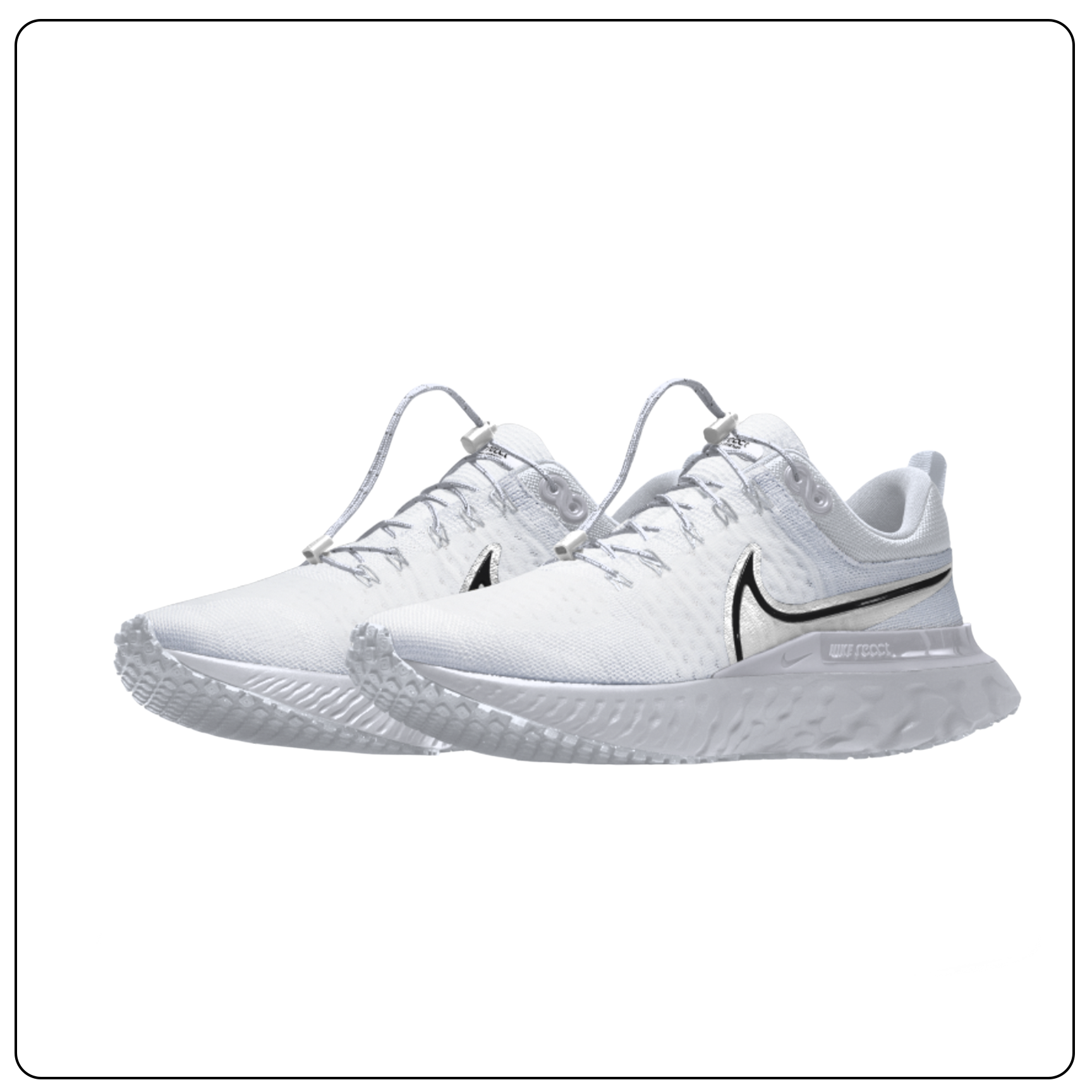SNEAKERS FOR WORKOUTS
Even the simplest of tasks invite us to consider our individuality, preferences and honest needs.
The ‘best’ running shoes for you will depend on what you do while you run.
The human body is incredible, no two are exactly alike and although our experiences differ we can learn from patterns even down to the way that we run. For example, some pronate while some supinate (we will explain), so it may make sense to figure out which shoe may support you based on this.
We had Chiropractor and Doctor Kurt Hoverson from Myodetox on our podcast and we spoke about the importance of prioritizing our feet! If you are doing at home workouts, don’t be afraid to kick off your shoes and socks entirely and allow your feet to breath and build strength on their own. Investing in a lacrosse ball is a powerful tool to help support our feet when we apply so much pressure to on daily, especially in shoes.
So what is pronation and why does it matter?
Pronation is the way you're foot naturally moves as you run. When your foot strikes the ground, it may roll inward dependent on the individual to absorb the shock. This natural movement helps you push evenly from the ball of your foot and is an essential part of your overall gait cycle (the way you move).
Understanding the way your foot moves is a big part of improving your shoe selection, and potentially minimize the chance of injury. Knowing your pronation type will:
Determine the type of running shoes you wear
Help reduce the potential risk of injury
Assist your overall running performance
3 Pronation Types
Depending on the degree of pronation, the right shoe selection will help your natural running movement. Some runners can either roll inward too much, or not enough. There are three main pronation types for runners.
It’s important to understand where you sit on the pronation spectrum, as it will determine the type of running shoe you wear.
UNDERPRONATION
Underpronation, also known as supination, means your foot doesn't roll inward as much when it hits the ground.
Your running cycle looks like: heel strikes first, weight transfers to the outside of the foot, and instead of distributing evenly it stays there, causing you to push off the outer toes and lateral side of the foot.
Common foot types: high arches, ridged feet, flat feet
Common injuries: plantar fasciitis, shin splints, ankle strain.
Consider cushioned running shoes
Since supinators underpronate, it means you’re more susceptible to injuries like stress fractures. When choosing your running shoe, look for ones that are neutral with plenty of cushioning, so as to alleviate some of that impact.
Running shoes should be designed with:
Midsole cushioning for extra shock absorption
Cushioning on the outside of the shoe
Support and cushioning in the heel
Flexibility to help evenly distribute impact
NEUTRAL
If you’re a neutral pronator, you have the ideal pronation for effective shock absorption. It means your foot rolls about 15 degrees inward when striking the ground. This gait cycle can be described as a ‘normally’ pronated foot.
Your running cycle looks like: heel strikes, foot comes down in a stable platform, then you push off slightly from the big toe.
Common foot types: normal-sized arches.
Common injuries: because of effective shock absorption, injuries are less likely, yet you can still suffer from common running injuries.
Consider Neutral running shoes
If you’ve got a normal pronation style, you should get a running shoe that supports your natural movement. Specialized neutral running shoes that offer cushioning and support are the best fit.
Your running shoes should be designed with:
Neutral cushioning that supports natural foot motion
Extra cushioning if you’re a beginner runner (this offers support as you build muscle strength)
Natural running shoes
OVERPRONATION
Overpronation is when your foot rolls inward excessively when it hits the ground, putting the pressure on the inner or medial side of the foot.
Your running cycle looks like: heel strikes, ankle rolls further to the inside, because of this inward pressure, there’s a significant push off from the big toe or you get very little propulsion as your foot is not rigid at toe off.
Common foot types: low arches or flat feet.
Common injuries: shin splints, plantar fasciitis, bunions, heel spurs.
Consider stability running shoes
For overpronators, maximum support is needed. Running shoes with structured cushioning and stability are the best fit, as they will help you distribute impact and reduce the potential risk of injury.
Your running shoes should be designed with:
Stability that helps evenly distribute impact
Medial post support (this is the part of your shoe that supports the arch)
A supportive mid-foot giving the foot torsional integrity
Firm midsoles that provides support and stability,
If you aren’t sure, here are two ways you may gather more information.
#1 Check Your Shoe’s Wear Patterns
Another way to figure out your foot movement is to check the wear patterns on your running shoes. While they don’t provide a full picture, certain signs on your shoes can reveal useful clues about the way your foot moves.
Shoe wear patterns can show where your foot is being impacted and where you might need extra support and cushioning. When you check your shoes, look for parts that are more worn down, and how your shoes sit when placed on a flat surface.
Wear Patterns
Underpronators: Wear on the outside of the shoe.
Neutral: S-shape pattern on soles of shoes from the outer heel to the even wear through the forefoot and big toe.
Overpronators: More wear on the inside of the heel and under the ball of the foot and especially the big toe.
Shoe Tilt - Looking from behind the heel.
Underpronators: A slight outward tilt when placing shoes on a flat surface.
Neutral: No tilt when placing shoes on a flat surface.
Overpronators: An inward tilt when placing shoes on a flat surface.
#2 Try An At Home Test.
In order to determine your foot type, there are several fundamental tests you can perform in the comfort of your own home. The simplest being the “Wet Test” in which you wet the sole of your foot and step onto a blank piece of paper. The damp footprint left behind will help establish whether you are a neutral runner, overpronator or underpronator. Combined with your preferred running locale, this will lead your stride in the right direction in terms of the footwear which may be most beneficial for you.
‘Ultimately, nothing beats trial and error, make sure you are ordering from a place that allows you to return if you decide the shoe is not suitable for your specific needs. This is where we bring exploration and play in, try things on and know that you can check in with your unique feedback’.
Below you will find several tried and true closet staples we appreciate for a variety of different occasions from cross training, weight lifting, walking, jumping rope or every day wear.
EVERYDAY & RUNNING
ON CLOUD
On is notorious for their diverse range of shoes for whatever your needs are. The Cloud elements making up the CloudTec sole allow superior flexibility & stability and movement. The unique design of the soles make for an almost universally comfortable shoe and they range from everyday wear for casual walking, athleisure, urban exploration, travel or for the avid runners.
We deeply appreciate their sleek and organic color pathway that feels unisex and androgynous in comparison to some of the other stereotypical and heterosexual color pathways created by most brands. Their website is informative for more detailed insight for your specific requests.
CROSSTRAINING & LIFTING
NIKE METCON 3
The Metcon 3 is a reliable shoe for those of you cross training. I used to constantly train in my running shoes which had way to much cushion and made me susceptible to rolling an ankle.
This shoe has the flexibility of a Nike Free sole with that flat wide heel that always you to move quickly for speed, agility or weight lifting.
When lifting weights, or cross training you really want to look for a stable base, the rubber tread gives you the flexibility and traction for diverse surfaces.
The foam cushioning is designed to be softer in the middle and firmer around the edges for dual combination of comfort and stability. The sole wraps up the sides to create support when moving side to side. As we work to bring in functional movement that encourages we move in varied planes of motion this will be helpful.
These shoes do run slightly smaller than most so we would suggest potentially purchasing a half size up if you are true to size. For example a true size women 8 may opt for a 8.5.
We also love the sleek color pathway of the ‘Men’s’ and if available in your size also consider Men’s shoes also.
RUNNING
NIKE REACT INFINITY RUN FLYKNIT
The Nike React Infinity Run Flyknit is designed to help reduce injury and keep you on the run. More foam and improved upper details provide a secure and cushioned feel. Lace up and feel the potential as you hit the road.
This product was responsibly designed utilizing recycled materials from post-consumer and/or post-manufactured waste. One of our biggest steps on our journey to zero carbon and zero waste is in choosing our materials because they account for more than 70% of any product’s footprint. By reusing existing plastics, yarns, and textiles, we significantly reduce our emissions. Our goal is to use as much recycled materials as possible without compromising on performance, durability and style.
Learn more about our Move to Zero, including how we're working to make product responsibly and help protect the environment where we live and play.
WALKING OR JUMPING ROPE
ALLBIRDS TREE DASHERS
One of our favorite sneakers are the breathe-able pair by Allbirds. I enjoy walking in them, wearing them out to grocery shop. They are so comfortable and the mid high top gives a cool flare to an every day sneaker. The layered wool gives it texture that I wildly appreciate from an aesthetic perspective. There is also no flashy logos. No senseless details. Just a really comfortable shoes, made naturally and designed practically. Simplicity done well.
So when asked about her favorite workout sneaker, “It’s less about picking a shoe, and more about picking YOU. What do you need and how resourceful can we be to create the fullest experience while we investigate that?” said Maxine Goynes, Founder of MG METHOD.










